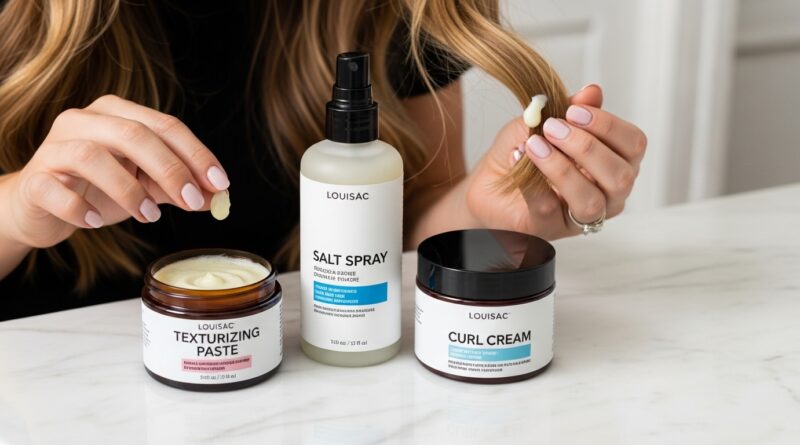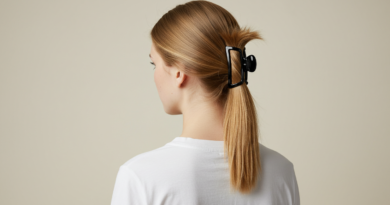6 Subtle Changes That Make Your messy cut Look Brand New
We’ve all been there. You leave the salon with high hopes, only to get home, look in your own well-lit bathroom mirror, and feel your heart sink. The layers are wonky, the bangs are too short, or the overall shape just feels… off. A messy or disappointing haircut can feel like a personal disaster, but before you reach for the hat collection or book an emergency appointment elsewhere, take a deep breath.
The secret that top stylists know is that most “bad” haircuts aren’t beyond repair—they just need a few strategic adjustments to shift from messy to masterful. Often, it’s not about taking off more length, but about tweaking the texture, movement, or styling to create a completely new illusion.
1. The Power of Strategic Texturizing
One of the most common complaints after a haircut is that it feels too blunt, heavy, or “helmet-like.” This is often a result of a cut that is technically even but lacks internal movement. The solution isn’t necessarily to go shorter, but to introduce texture.
Texturizing is the art of removing bulk and creating separation without sacrificing the overall length or shape. It’s what gives hair that effortless, piecey, and lived-in quality. If your cut feels bulky at the ends or lacks flow, carefully texturizing the mid-lengths and ends can be a game-changer. Using texturizing shears or even just point-cutting with your regular scissors (if you’re confident) into the ends of small sections can break up that solid line.
Focus on the areas that feel the most dense. For a bob, that might be the weight line at the back. For longer hair, it’s often the last two inches. Remember, the goal is subtlety. You’re not chopping randomly; you’re strategically removing tiny amounts of hair to allow the rest to move more freely. This single change can transform a stiff, geometric bob into a soft, modern shag or a heavy long cut into a feathered, lightweight style.

2. Master the Art of Face-Framing
Never underestimate the power of a good frame. A haircut that doesn’t account for your bone structure can feel disconnected and unflattering, even if the technique is perfect. Adding or refining face-framing layers is one of the most impactful ways to redirect attention and create a harmonious look.
Face-framing involves creating soft, forward-falling layers that start at your chin or lips and cascade down. These layers draw the eye to your central features—your eyes, cheekbones, and mouth—creating an immediate brightening and lifting effect. If your current cut feels like it’s dragging your face down or just sitting there without purpose, this is your first port of call.
To do this subtly, take a vertical section of hair from the front of your face, about from your temple to the corner of your mouth. Hold it out and away from your face, and point-cut into the ends to create a soft, diffused line. The length is key; it should be long enough to tuck behind your ears but still fall forward naturally. This technique adds a touch of softness and dimension without committing to a full set of layers throughout your hair, making it a perfect fix for a cut that feels too one-dimensional.
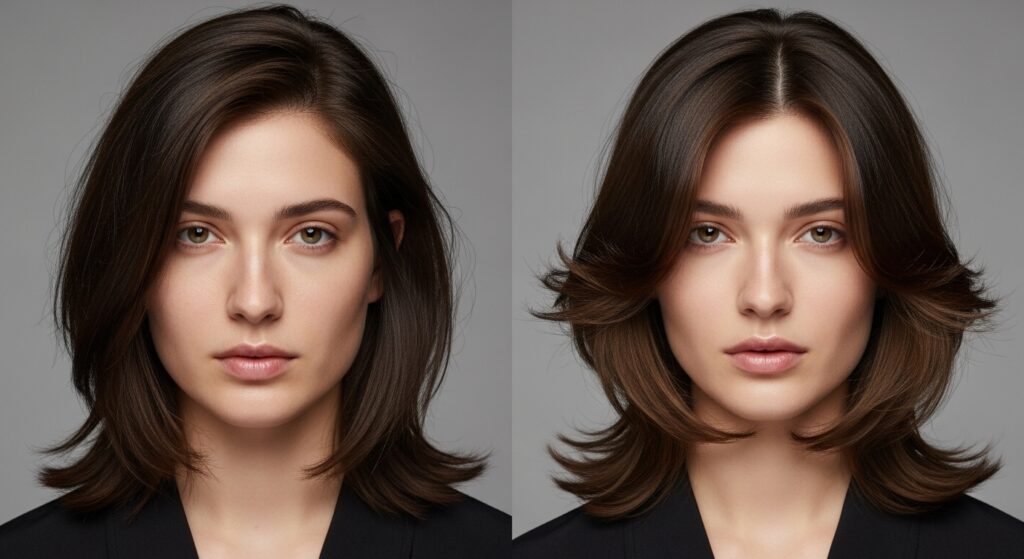
3. Rebalance the Silhouette
Sometimes, the issue with a messy cut isn’t the details but the overall balance. You might have one side longer than the other, the back might be significantly heavier than the front, or the layers might be disconnected in a way that creates an awkward shape from behind. Rebalancing the silhouette is about looking at your hair as a whole and making minor length adjustments to create a cohesive shape.
Start by looking at your hair from all angles: front, sides, and back. Does it look symmetrical? Does the weight distribution feel even? Often, a haircut can look great from the front but be completely unbalanced in the back. To fix this, part your hair down the middle and bring both front sections to your collarbone. Are they even? If not, a tiny trim to match them up can make a world of difference.
Next, assess the back. Pull all your hair forward over your shoulders and look at the U-shape the ends make. Is it even? If one side is longer, carefully trim to match. The goal is to create a silhouette that feels intentional and balanced, no matter the angle. This doesn’t mean you have to have a perfectly symmetrical bob; asymmetrical cuts are a style. But the asymmetry should be deliberate, not accidental.
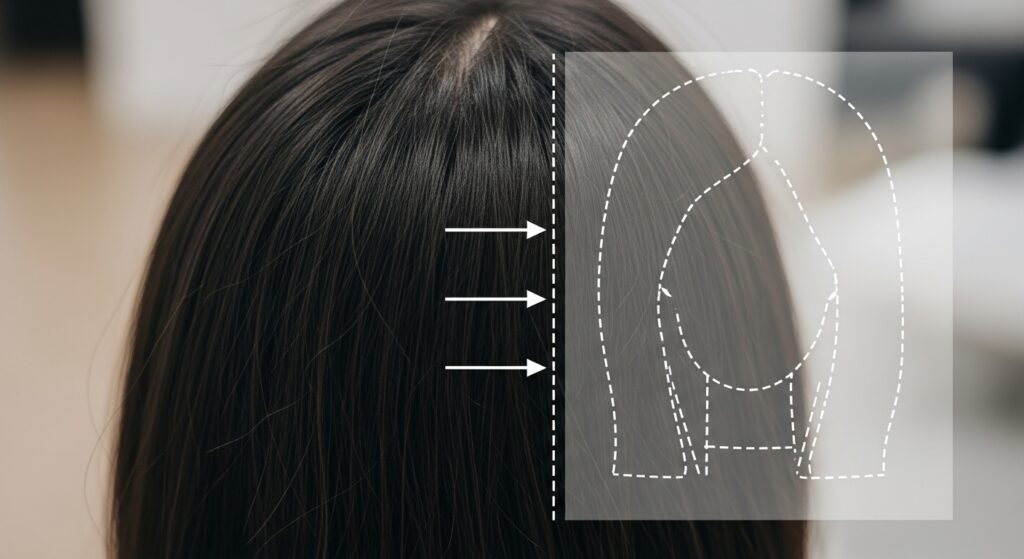
4. Switch Up Your Part
This is the easiest, zero-commitment trick in the book, and it can completely alter the perception of your haircut. We are creatures of habit, and we often wear our part in the same place for years. However, a haircut is designed with a specific fall in mind, and sometimes simply moving your part can redistribute weight and volume in a much more flattering way.
If your layers are falling awkwardly or your bangs are looking sparse, try a deep side part. This can instantly add volume at the crown and make layers blend more seamlessly. If you have a fringe that’s feeling too heavy, a center part can split it into two softer, face-framing pieces.
A new part can also hide a multitude of sins, like a layer that’s slightly shorter than the rest or a texturizing effort that went a bit too far on one section. It changes the direction of growth and the way light hits your hair, creating new shadows and highlights that can add incredible dimension. Before you pick up any scissors, spend a day experimenting with your part. You might find the “messy” cut you hated is actually a modern, trendy style you just needed to wear differently.
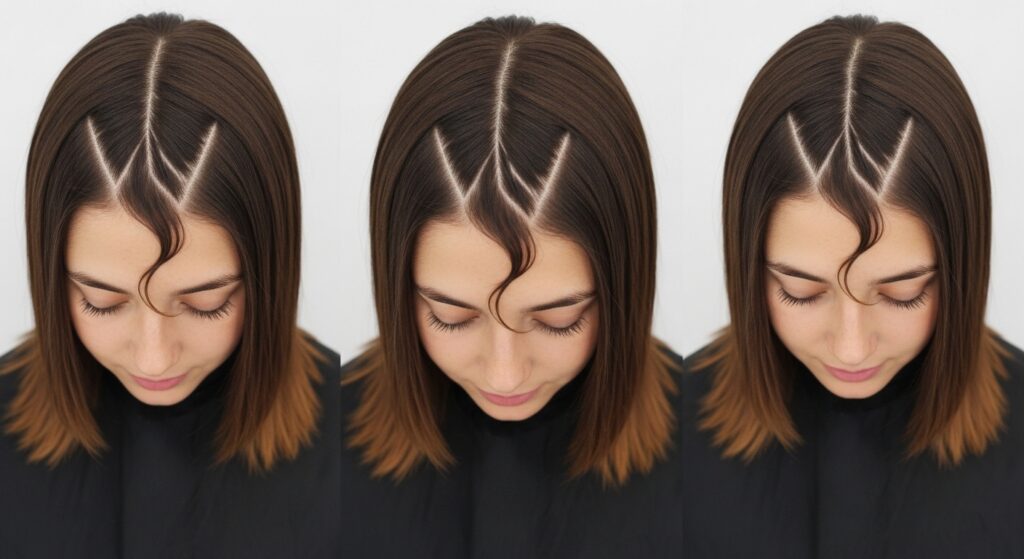
5. Elevate Your Styling Technique
A huge percentage of haircut dissatisfaction stems from styling, not the cut itself. The way you blow-dry, curl, or straighten your hair can either make a mediocre cut look amazing or a great cut look terrible. Elevating your styling routine is about working with your cut’s intended shape.
For example, if you have a bob, are you blowing it out straight and flat? Try using a round brush to curl the ends under or flip them out for a more dynamic, finished look. If you have long layers, are you curling your hair away from your face? Try curling a few pieces toward your face to break up the pattern and add frame. The direction of your styling tools dictates the final result.
Invest in a good volumizing spray and a round brush. When blow-drying, lift the roots at the crown for instant lift. When using a curling iron, don’t just clamp and spin; wrap sections of hair around the barrel for a more relaxed, wave-like effect. Using these techniques adds body and movement that can make a flat, lifeless cut appear full of bounce and intention. A well-styled, okay haircut will always look better than a poorly-styled, perfect haircut.
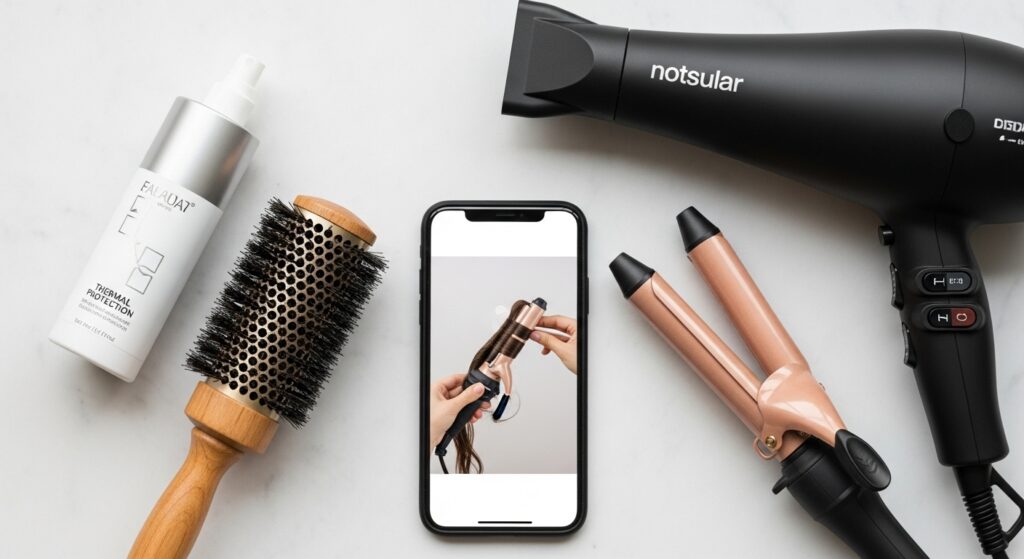
6. Embrace Texture with the Right Products
Finally, the products you use (or don’t use) can make or break your haircut. Many people with “messy” cuts are actually fighting their hair’s natural texture instead of enhancing it. If you have wavy or curly hair that’s been cut too blunt, it can look triangular and unkempt. The right product can redefine those curls and create a beautiful shape.
If your hair is fine and flat, a sea salt spray can add grit and volume, making layers appear more defined and piecey. For wavy hair, a curl-defining cream can clump waves together, reducing frizz and creating a more cohesive, intentional look. For curly hair, a strong-hold gel applied to soaking wet hair and scrunched can create defined ringlets that showcase the shape of the cut.
The key is to identify your hair’s natural tendency and choose products that enhance it, rather than force it into a different texture. A “messy” cut on straight, product-free hair can become a chic, textured shag with the application of a texturizing paste. Don’t be afraid to experiment with different formulations—mousses, gels, creams, and sprays—to find the combination that makes your specific cut look its best. This is the final, non-negotiable step in making any haircut look expensive and brand new.

You’ve Got This
A disappointing haircut is a temporary setback, not a permanent state. Before you decide it’s a lost cause, walk through these six subtle changes. Start with the easiest, non-cutting solutions like switching your part and upgrading your products. Often, that’s all it takes to see your hair in a new light.
If you do decide to take the scissors into your own hands, remember the golden rule: less is more. You can always take more hair off, but you can’t put it back on. Make small, incremental changes, and check your work constantly from all angles. And if you’re ever in doubt, there’s no shame in booking a corrective appointment with a trusted stylist—just be clear about what you don’t like and bring photos of what you want to achieve.
